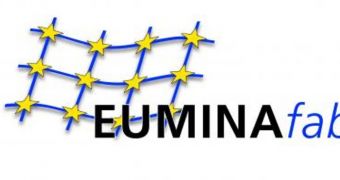Micro- and nanotechnology are two of the fields of research with the largest following to date, as they hold the keys to creating the most advanced devices of the future, on principles that do not necessarily pertain to physics as we know it. From a certain level of miniaturization forward, interactions between particles modify their nature, and chemicals and structures get new properties, which can be harnessed to the benefit of mankind. Europe's first specialized virtual infrastructure facility, dubbed EUMINAfab, has now opened its gates for researchers.
The lab is essentially a powerful tool for micro- and nanofabrication and characterization of various new materials. It is made up of 36 high-technology installations, located in eight countries and ten research institutions within the European Union (EU). The process of putting these equipments together individually carried a price tag of over 200 million Euros. The first submission proposals for user access on the instruments website, euminafab.eu, began being accepted today, September 1st, 2009.
“Based on our extensive portfolio of miniaturization technologies, users are offered specific micro- and nanotechnological solutions for their problems and development projects. This will be of particular benefit to both industrial competition and science,” explains Matthias Kautt, the project coordinator at EUMINAfab. In addition to the capabilities of the virtual facility, those who will conduct their work with it will also receive adjacent scientific expertise from other scientists, already familiar with the various components of the new system.
The European Infrastructure for Micro- and Nanofabrication and Characterization (EUMINAfab) also offers individual access to any of the single instruments that make it up, if the team using it at the time wants this. Thin-layer deposition and molding are the two main areas of focus for the new system, although work such as testing new products under self-selected and self-organized parameters is also possible. The innovations naturally have to be at the micro- or nanoscale. The machine is announced to function under an open-access license.
Partners of the new installation include: the Cardiff University (Great Britain), Centro Ricerche FIAT ScpA (Italy), Commissariat a l'Energie Atomique (France), Forschungszentrum Karlsruhe GmbH/Karlsruhe Institute of Technology (coordination, Germany), Fraunhofer Society (Germany), Fundacion TEKNIKER (Spain), IMS Nanofabrication AG (Austria), Kungliga Tekniska Hogskolan (Sweden), MiPlaza Philips Research Europe (the Netherlands), and the National Physical Laboratory, in Great Britain.

 14 DAY TRIAL //
14 DAY TRIAL //